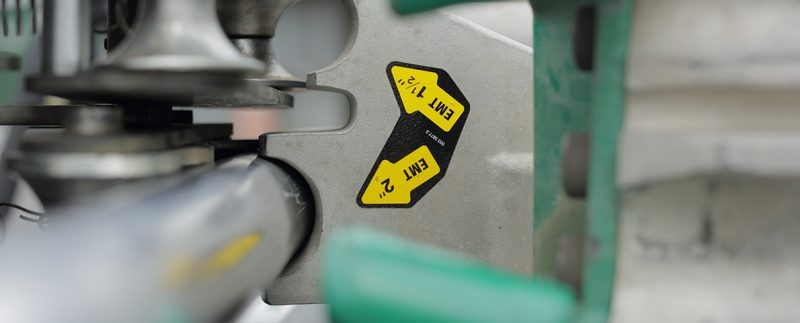If you’re exploring aluminum conduit options, an American Conduit expert will be happy to help. Not only will we tell you about the many varieties of conduit we offer, we’ll also tell you which type of conduit will work best for your exact application. Our conduit is versatile enough to work with just about any sort of installation. The following is some information on why that’s so important.
Ease of Installation
 One of the primary advantages of aluminum conduit is the ease of installation. The inherent flexibility of aluminum conduit – especially PullEase™ EMT from American Conduit – allows for easier bending and maneuvering around obstacles, making the installation process more efficient. This characteristic is even more important in applications where conduit installation is complex, such as in projects that require installation along non-linear pathways.
One of the primary advantages of aluminum conduit is the ease of installation. The inherent flexibility of aluminum conduit – especially PullEase™ EMT from American Conduit – allows for easier bending and maneuvering around obstacles, making the installation process more efficient. This characteristic is even more important in applications where conduit installation is complex, such as in projects that require installation along non-linear pathways.
Navigating Tight Spaces
The ability of aluminum conduit systems to navigate tight spaces is a significant benefit, especially in commercial and industrial environments where available space can be limited. You can easily route PullEase™ EMT around corners, through walls, and in areas with challenging layouts. This flexibility simplifies the installation process, reduces the need for excessive fittings, and minimizes the impact on the surrounding structure.
Adaptability to Building Designs
Architectural designs often call for electrical conduits that seamlessly integrate with the aesthetics of a building. Our aluminum conduit systems provide designers and installers with the freedom to conform to various architectural styles. The conduit can be bent and shaped to follow the contours of the building, allowing for a better-looking, seamless integration within the overall design.
Resistance to Mechanical Stress
Aluminum conduit is also remarkably resilient when subjected to mechanical stress. This flexibility helps the conduits withstand vibrations, impacts, and other mechanical forces without compromising their structural integrity. This makes aluminum conduits suitable for applications where they may be exposed to occasional physical stress, such as in industrial environments with heavy machinery or seismic-prone regions.
Facilitating Future Modifications
The adaptability of aluminum conduit extends beyond the initial installation phase. In environments where future modifications or expansions are anticipated, the flexibility of aluminum conduit allows for easier adjustments. Installers can make alterations to the conduit without the need for extensive rework, contributing to cost savings and minimizing disruptions to ongoing operations.
Corrosion Resistance for Outdoor Applications
In outdoor installations, where exposure to the elements is a concern, you can benefit from not only the flexibility of aluminum conduit but also its corrosion resistance. This combination makes aluminum well-suited for applications such as outdoor lighting, landscape installations, or infrastructure projects where conduit may be exposed to rain, sunlight, and varying temperatures.
Enhancing Worker Safety
The flexibility of aluminum contributes to enhanced worker safety during installation. The lightweight nature of aluminum, combined with its flexibility, reduces the physical strain on installers. This not only makes the installation process more comfortable but also minimizes the risk of work-related injuries, contributing to a safer working environment.
When you’re exploring aluminum conduit options, keep PullEase™ EMT from American Conduit in mind. Many of our clients have found PullEase™ EMT to be indispensable in modern electrical installations. As the demand for adaptable and efficient electrical solutions continues to grow, PullEase™ EMT stands out as a reliable component that will address your evolving needs. Find out more by calling 1-800-334-6825 or using our online form.

